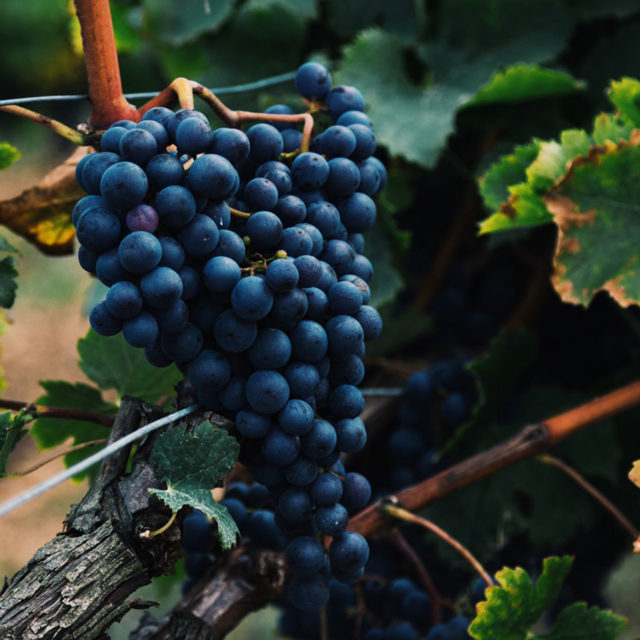A historic red grape, with multiple identities around the world, is in the midst of a quiet, almost accidental comeback.
Mission arrived in Mexico with Spanish settlers in the 1500s. It was the first vitis vinifera variety planted in the so-called “New World,” and got its name from the missionaries who planted it throughout the Americas to make sacramental wines. The missionaries also used the variety to make thinly flavored table wines, which were an unbalanced mix of gripping tannins, high alcohol, and low acidity.
By the end of the 19th century, “noble” European varieties like Riesling and Cabernet Sauvignon proved themselves to be more proficient for high-quality winemaking. Those Mission vines that weren’t replaced were abandoned and left to grow old unattended.
This could, and perhaps should have been the end of the line for the historic grape. But in the countries where it once dominated, a new generation of winemakers is now re-embracing Mission, producing wines of an unrecognizable quality from those previously forgotten old vines.
The resulting wines go by a variety of names, including País, Criolla Chica, and Misíon, depending on their country of origin. Age has been kind to their vines, helping them to produce grapes with a higher flavor concentration. Meanwhile, in the winery, the adoption of low-intervention, “natural” winemaking techniques has also proved beneficial.
A thick-skinned variety, Mission’s extreme bitterness and tannins become pronounced when it’s vinified using the traditional extractive red-winemaking techniques. Taking a minimal-intervention approach, and leaving grapes to ferment undisturbed, reduces the tannic extraction, resulting in light, fruity reds, similar in style to Pinot Noir (if not flavor or aging potential).
The grape currently accounts for some 24,000 acres of vineyards in Chile, where it is called País. The figure is just a fraction shy of Chile’s total Carménère plantings (26,000 acres), and is more than double the amount of Pinot Noir currently grown in the country (10,100 acres).
Production is concentrated in the southern regions of Maule, Bío-Bío, and Itata. Burgundian enologist Louis-Antoine Luyt is widely credited with reviving interest in the variety after he started making wine in the Maule Valley in the mid-2000s. Ignoring locals’ assertions that his ancient País vines were good for nothing other than low-quality table wine, Luyt released his first País wine in 2007.
Jose Luís Bastías, of Maule winery González-Bastías, was one of a number of winemakers in the region to follow Luyt’s lead. For his País wines, Bastías farms 200-year-old vines that resemble apple trees. Another producer, Bouchon, requires 16-feet-long ladders to harvest its ancient País vines.
In Argentina, the variety is known as Criolla Chica. “These grapes have the flavors which we grew up with,” Alejandro Pepa, winemaker at Bodega El Esteco, says. “They are the grapes of our grandparents, the first wines that many of us tried.”
Pepa makes light, fruity Criolla wines using grapes grown on 60-year-old vines in the Calchaquí Valley in northwestern Argentina. Nearby, a trio of well-known winemakers — Pancho Lavaque, Marcelo Pelleriti, and Hugh Ryman — makes wines from similarly ancient ancestral vines under the label Vallisto.
Argentina’s best-regarded Criolla wines come from a producer called Cara Sur, in the Calingasta Valley in San Juan. Founded by Sebastián Zuccardi, Marcela Manini, Nuria Año Gargiulo, and Pancho Burgallo, the project focuses on native varieties and practices low-intervention winemaking.
Criolla is also one of the parent grapes of Torrontés, a widely-planted white Argentine variety. The aromatic white grape is a cross between Criolla Chica and Muscat of Alexandria, another transplant from Europe.
When Mission, or Misíon, arrived in Mexico, it thrived in the country’s Baja California Norte region. Since 2014, natural wine producer Bichi has been spearheading a revival in Tecate, close to the American border.
Run by brothers Noel and Jair Téllez, Bichi is helping to fuel interest in a growing natural wine scene in Mexico City. The producer’s Misíon grapes grow in a 24-acre, biodynamically farmed vineyard on 100-year-old vines.
As of 2017, California has just 409 acres devoted to the grape, called Mission in the United States. Production is centered around Santa Barbara and Los Angeles, though the grape is not as closely linked to natural winemaking as it is in other regions. Some of the best Californian Mission wines instead appear in a fortified style known as Angelica.
Mission is genetically identical to a grape from the Canary Islands called Listán Prieto. It had been planted across Spain’s Castilla-La Mancha region as well, but was mostly decimated during the phylloxera outbreak of the late 1800s.
Today, finding a 100-percent varietal incarnation of Listán Prieto wine is challenging, as many of the islands’ vineyards are planted with multiple varieties, which are usually harvested together and co-fermented. Envinate, an exciting group of young Spanish winemakers, makes an almost-100-percent Listán Prieto wine called Benje Tinto. It also blends the variety with Listán Blanco for its Vidueño de Santiago del Teide bottling. The group includes Listán Prieto among a number of other indigenous varieties in a field blend called Parcela Margalagua.
FIVE MISION/PAIS/CRIOLLA WINES TO TRY
J. Bouchon ‘Pais Viejo’, Maule Valley, Chile. Average Price: $15.
Viña González-Bastías ‘País en Tinaja’ País, Maule Valley, Chile. Average Price: $25.
Cara Sur Criolla, Barreal, Argentina. Average Price: $19.
